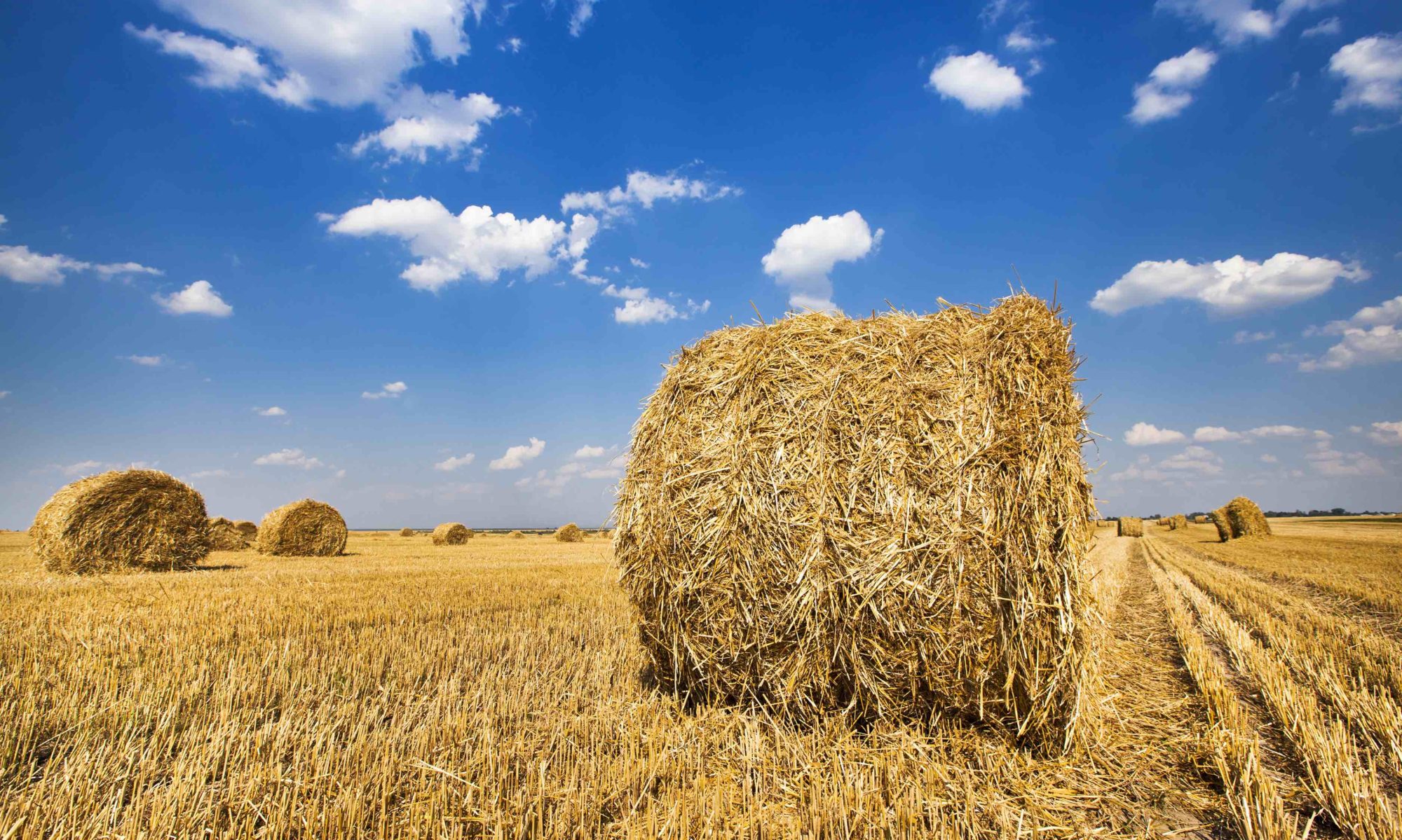There are large amounts of residues available from the food industry and the from household food waste collection. We present a comparison for four larger fractions of these residues.
Considerable amounts of animal waste from slaughterhouses are available in all SBA regions. Alothough data do not include the regions West Pomerania and Warmia and Mazury in Poland, the amount of residues in Poland are highest among the four SBA regions.
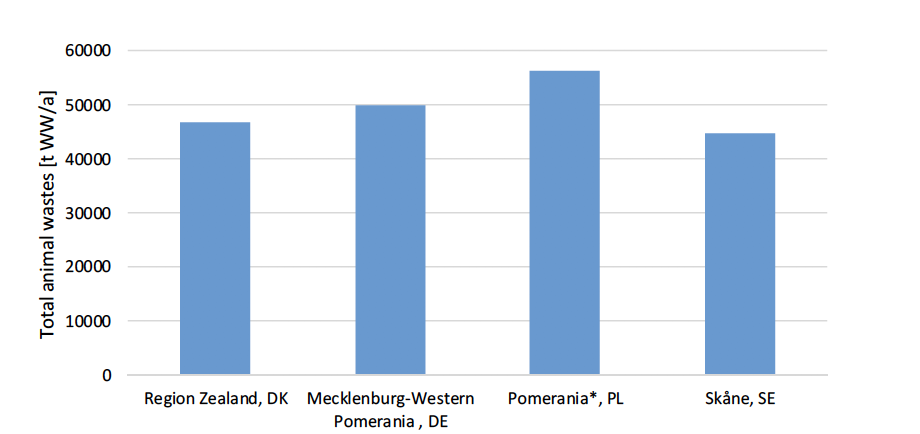
Figure 1. Total animal wastes in the four SBA regions. * Data for regions West Pomerania and Warmia and Mazury, Poland, is missing. (Ref. 1)
Due to a very high milk production and low fraction of by-products, Skåne show a considerably higher potential, around 70,000 tonnes wet weight per year, compared to the other SBA regions . The Polish SBA regions still have a large potential of residues from dairies, around 50,000 tonnes wet weight per year. Whey represents the major proportion of the residues.
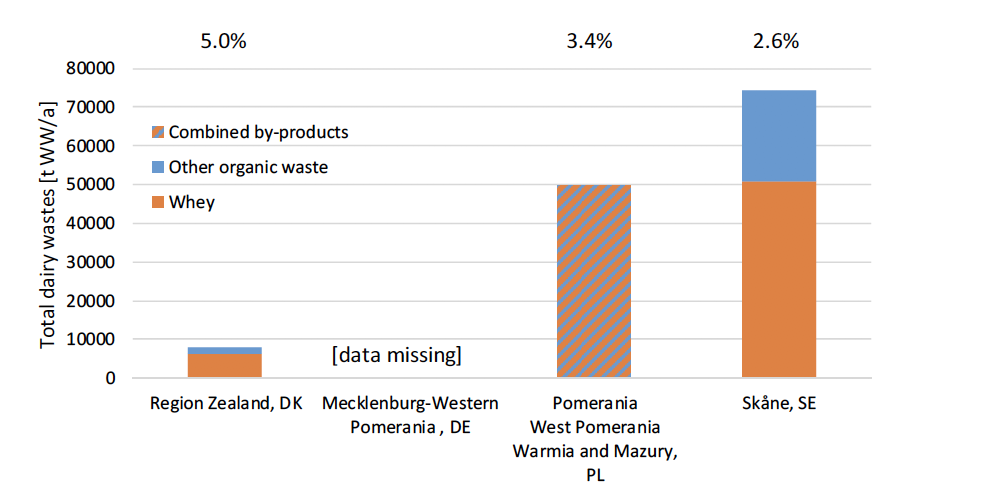
Figure 2. Dairy residues in the four SBA regions. Numbers above the columns refer to proportion of residues relative to total milk production. * Data for Mecklenburg-Western Pomerania is missing (Ref. 2).
In terms of brewery by-products, substantial amounts are available from two large breweries and one malting company in the Danish SBA region, which amount to circa 58,000 tonnes per year. In the German SBA region, fiver smaller breweries co-produce approx. 25,000 tonnes per year of residues. In comparison in the Swedish and Polish SBA regions, only microbreweries exist that produce residues. Almost all residues from both large-scale and micro breweries are used as animal feed or as a feedstock in biogas production. Of the Danish by-products, about 70% are spent grain, 20% are yeast residues and 10% are husks.
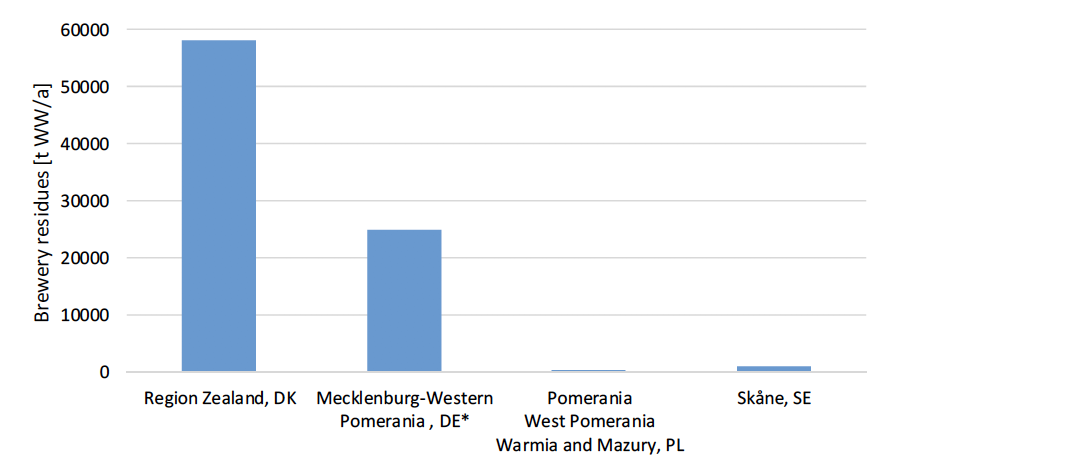
Figure 3. Brewery residues in the four SBA regions. * Data for Mecklenburg-Western Pomerania was calculated on the basis of 1.59 million hectolitre beer production (Ref. 3) and amass fraction of 15.7% of residues on total beer production similar to Danish production data (Ref. 4)
Another large fraction of by-products and residues is household food waste as separated from household waste. The food waste potentials vary between 50,000-110,000 tonnes per year of food waste in the four SBA regions . Also, the share of how much of the potential that is collected varies strongly between 39% in Mecklenburg-Western Pomerania and 86% in Skåne.
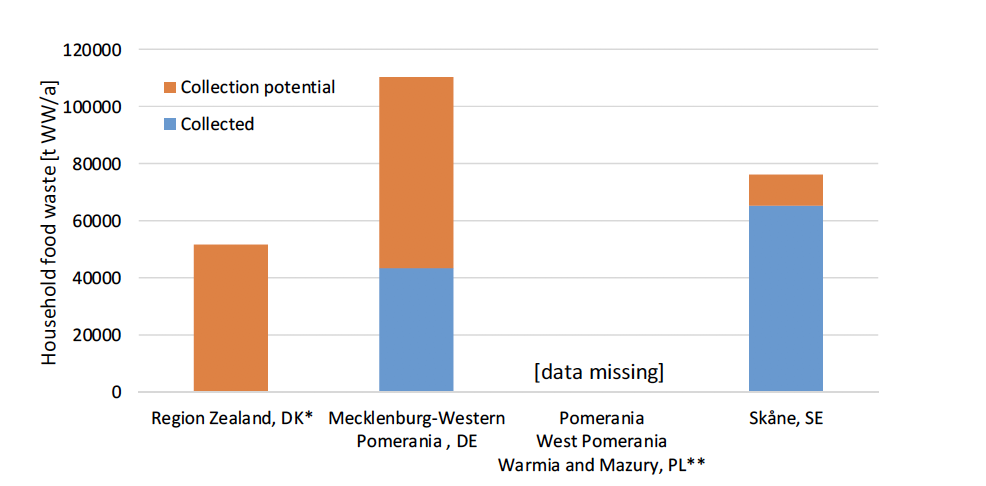
Figure 4. Collection potential and collected amounts of household food residues in the four SBA regions. * Data for collected amounts missing for Region Zealand. ** Data for the Polish SBA regions is missing (Ref. 5).
Opportunities
Animal waste
Sludge, blood spill and intestine content are the fraction of animal wastes occurring in slaughterhouses. These residues are termed waste as part of the EU regulations that aim to avoid spreading of diseases like BSE and food and mouth disease from animal by-products. Animal residues are grouped into three categories of which Category 1 residues are considered specified risk materials (SRM), which also includes material from international transports, and which need to be combusted. Category 2 materials include among others manure and rejected animal materials, which require sanitissation by a thermal treatment. Category 3 includes animal residues that are not part of categories 1 and 2, e.g. waste from the food industry and food returned from the stores.
Due to the recent emergence of bovine spongiform encephalopathy (BSE), most of the traditional uses of rendered animal meals such as blood meal, meat and bone meal (MBM) as animal feed, pet food or fertilizer were eliminated with significant economic losses for the entire sector. Residues within Categories 2 and 3 can be used for composting, biogas production or e.g. production of chemicals, but need to be sanitised.
Hydrolysis of keratins from animal hair and wool, horns, claws, hooves, feathers and scales representing animals groups of mammals, birds, fish, reptiles, and amphibians, could be used for production of nitrogenous fertilizer and animal feed) and its fermentation broth could be useful in leather industry and textile industry.
Animal manure and fecal sludge have been suggested as feed for insect production, where e.g. fly larvae are used to treat the organic residues and the harvested larvae could be used as animal feed or for production of secondary products (biodiesel, biologically active substances). Also protein extraction from these materials has been suggested almost 40 years ago.
But also specified risk materials (Category 1) could be used for innovative products, such as development of an environmentally friendly protein-based plywood adhesive with an improved water resistance property. Even other protein-based products have been suggested, including o bio-based plastics, flocculants and surfactants and fire fighting foams. The fat fraction could be valorized into products and co-products that are utilizable in the biodiesel and oliochemical industries.
Dairy residues
Dairy wastes, generally, have suspended solids and organic matter, high content of nitrogen and phosphorous and the presence of oil and greases. Furthermore, they can contain residues of the cleaning products used in utensils and equipment cleaning. Dairy residues include mainly whey protein, milk residues and fat sludge. For the milk residue, dairies have expressed their ambition to decrease the amount of residues as far as they can be avoided399. Milk residues and fat sludge are often used for biogas production due to their high energy content. However, fermentation of these residues for the production of neutracuetical and supplements has been suggested. In the fermentation step, microbial-driven release of functional ingredients is desired and the harvested products as expected to have e.g. antioxidant, antimicrobial, immunostimulatory, antidiabetic, anticancer, antihypertensive, anticoagulant, calcium-binding, hypocholesterolemic and appetite suppression effects.
Whey, a by-product from cheese production, is rich in proteins. The residual product can be fractionalised into lactose, whey proteins as whey protein concentrate, lactalbumin and lactoglobulin, which are products commercialized in the food and pharmaceutical industries. Arla, a leading dairy in Europe, announced recently the investment of over 3 million Euros in an innovation centre to process whey as a food ingredient, with a second innovation centre facility inaugurated last year already.
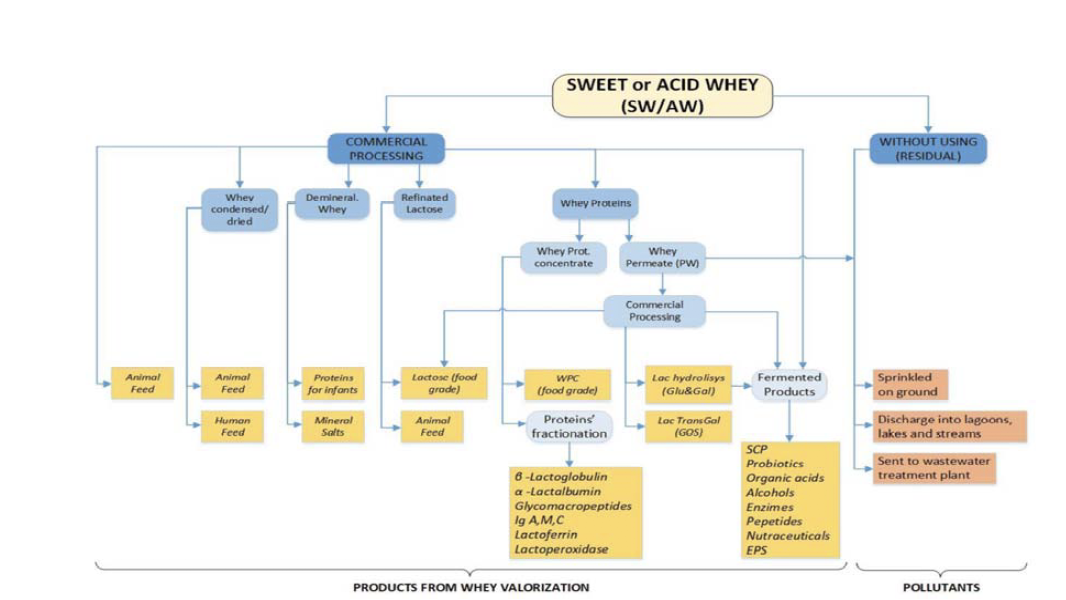
Figure 5. Potential uses of milk whey (Ref. 6)
Whey and its protein concentrate are used as ingredients in the food industry mainly due to their foaming and emulsifying properties. Furthermore, whey proteins provide a way to fortify foods, increasing the nutritional quality of cheese, dairy desserts and bakery products. Production of beverages through lactic fermentations, providing desirable sensory profiles, has been pointed out as an option to add value to whey. For instance, a whey-based kefir beverage with strong bacterial inhibitory properties that also contains potentially probiotic microorganisms has been demonstrated. Other fermentation-based products using whey as sustainable substrate include e.g. biofuels such as ethanol and butanol, single cell protein, organic acids such as lactic acid, propionic acid and succinic acid, enzymes, bioactive peptides as nutrional supplements, polysaccharides such as xanthan gum, exopolysaccharides (EPS), biosurfectants such as sophorolipids as well as polyhydroxyalkanoates (PHA), e.g. polyhydroxybutyrates (PHB).
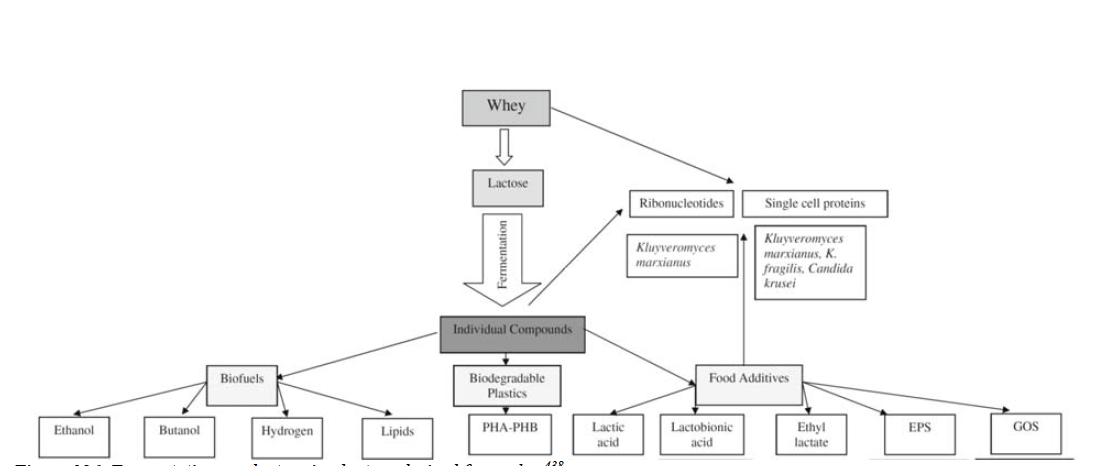
Figure 6. Fermentation products using lactose derived from whey (Ref. 7).
But also non-food application of whey components have been suggested, e.g., safe paper glue based on whey protein isolate and sucrose. Another example are nanofibrils derived from whey protein, which can be used in edible films and coatings (EFCs). These materials provide functions such as preventing weight loss, reducing lipid oxidation, providing microbial stability to foods, protecting antimicrobial compounds against adverse reactions (such as oxidation or hydrolysis), andpreserving functional foods during processing and storage.
Also for the by-product of whey protein isolate formation, i.e. the whey permeate, uses have been suggested. The permate has a high content of lactate and production of unicellular microbial protein for animal feed, the production of organic acids, alcohols, and the production of probiotics and different prebiotic substances are possible uses.
Brewery residues
Typical residues from breweries include brewer´s spent grain (BSG), which composes the major fraction of the residues as well as residues of hop, wort and yeast. BSG consists of the
barley grain husks obtained as solid residue after the production of wort and is rich in fibre and protein. Typically, the residues are either used as animal feed (either on the own farm or sold/donated to other organisations) or as feedstock for biogas or ethanol production.
There are some BSG components of interest for potential health benefits. These include dietary fibres (e.g. arabinoxylan, β-glucans, lignin), phenolic components (e.g. hydroxycinnamic acid, ferulic acid and p-coumaric acid) and the protein fraction (~15–25% w/w) with a high content of the essential amino acid lysine (~30% of the total protein content), in comparison to other cereal products.
Based on high cotent of these components, BSG has been utilised in the manufacture of bakery products such as bread, biscuits, cookies, muffins, cakes, waffles, pancakes, tortillas, snacks, doughnuts and brownies. For manufacturing these types of products, BSG is dried and in many cases is milled to allow application in food products.
BSG is rich in cellulose and hemicellulosepolysaccharides, which are added value compounds with many industrial applications and which can be extracted using several chemical processes such as acid and hydrothermal hydrolysis. Xylose and arabinose are the most common sugar present in the hemicellulose fraction of BSG, which can be extracted after chemical hydrolysis. Acid hydrolysis can be used prior to extraction of lignins from BSG, which are valuable components for the production of dispersant,emulsificant and chelant agents, activated charcoal, polymers,adhesives and fertilizers, among others. The ferulic and p-coumaric acids, extractable by means of chemical treatment, have been reported to have antioxidant properties and have important industrial applications in food, cosmetic and pharmaceutical areas. The BSG fiber are also of interest for the pulp and paper industry (e.g. for production of paper towels, business cards and coasters) and as absorbant materials (e.g. for heavy metal removal). Fermentative use of the spent grain as growth medium has been suggested but also as less chemical-intensive methosd for extraction of the valuable compounds.
Household and industrial food waste
Collection of food waste from households is part of the EU goal of reducing the amounts of organic residues ending up in dumps and other household waste fractions. The amount of food waste available to innovative uses depends on several steps.
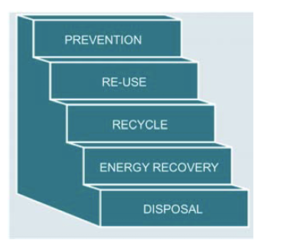
Figure 7. EU priorities for the handling of organic wastes (Ref. 8).
Highest priority has the prevention of food waste, which of course influences the amount of food waste that can be collected. Most of the food waste in e.g. Sweden is treated so that nutrients are recycled and energy is recovered. The most efficient technology here is to digest the food waste in a biogas plant to recover methane gas as fuel and using the nutrient-rich digestate as a fertiliser in agriculture. From a sustainability point of view, anaerobic digestion and incineration with energy recovery are the best options to treat food waste. Beside fermentative processes, thermal
treatments of household biowaste such as torrefaction and carbonization that produce carbon-rich solid biofuels have been suggested. Innovative uses of collected food waste fall under the category re-use. The recovery of nutritional, functional, and textural properties from the food supply chain waste will be an important
driver. For example, new food industry additives could be derived from protease inhibitors (appetite suppressants) from potato peels or essential oils, flavonoids, and pectin from citrus waste or other bioactive compounds including polyphenols, carotenoids, vitamins, antioxidants, flavonoids, and fibers extracted from vegetable and fruits waste. Other valuable compounds in food wastes include chemicals (enzymes, organic acids, glycerol, animal feed, among others), materials (bioplastics, biopolymers, nanoparticles, fibers) or fuels (such as methane, hydrogen, biodiesel, ethanol). Due to its high water content and its nutrient and energy content, food waste has been suggested as substrate for fermentation processes. Here, food wastes can be used as potential feedstock in biological processes for the generation of various biobased products along with its remediation. Enabling bioprocesses for foowd waste valorisation include acidogenesis, methanogenesis, solventogenesis, photosynthesis, oleaginous process, bio-electro-genesis, etc., that yield various products like biofuels, platform chemicals, bioelectricity, biomaterial, bio-fertilizers, animal feed.
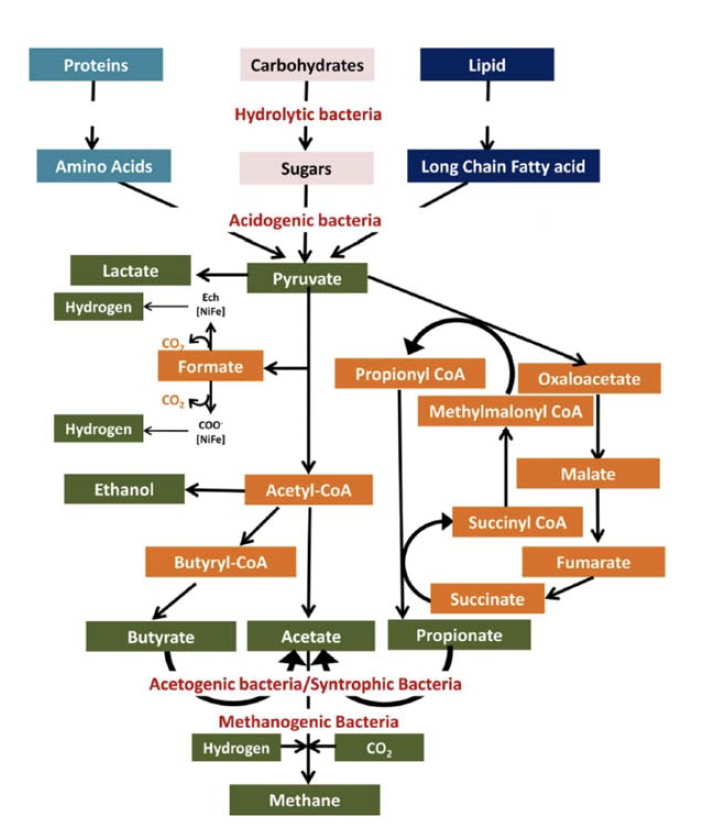
Figure 8. Schematic pathway of anaerobic fermentationfor biobased products generation (Ref. 9).
The conversion of this waste into volatile acids can be paired with bioenergy production, including hydrogen and/or biogas. For this purpose, food waste refinery concepts have been presented, that may use mixes of industrial food wastes to produce energy carriers (hydrogen, methane, heat and power) and hydrogen fermentation by-products which could be recovered as valuable bioresources such as volatile acids (including lactic, acetic, and propionic acids), bioplastics, compost and activated sludge. But also direct extraction from industrial food waste streams could be applied, e.g. recovery of carotenoids from fruit and vegetable wastes by supercritical fluid extraction.
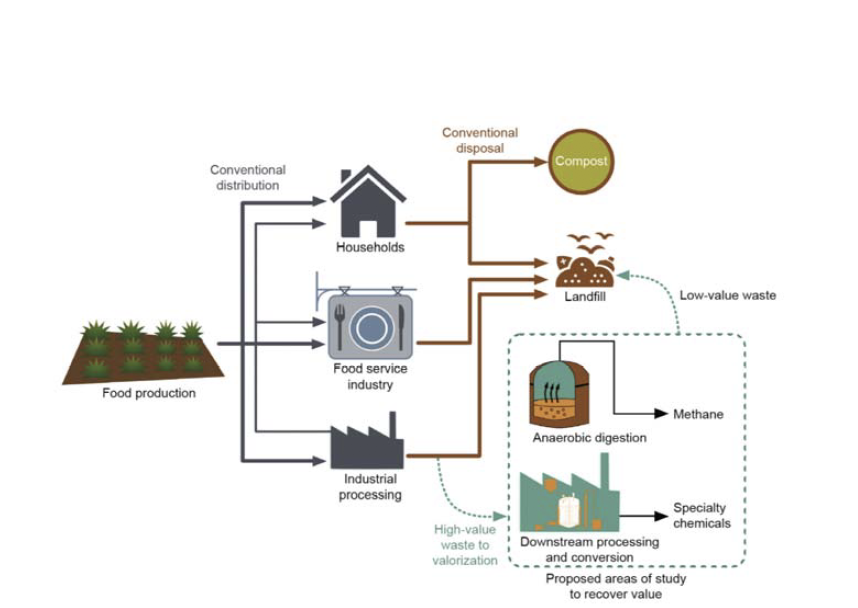
Figure 9. Simplified flow diagram of food from production to disposal (Ref. 10)
Bottlenecks
Animal waste
Bottlenecks for the production of fly larvae on feedstock from slaughterhouses on an industrial scale are have been identified as technological aspects of scaling-up the production capacity, insufficient knowledge of fly biology necessary to produce large amounts of eggs, and current legislation. Especially technological innovations are considered key measures to remove barriers and could greatly improve performance of the biodegradation facilities and decrease production costs.
For the speciality products suggested above, employment of a biorefinery approach valorizing all ingredients and co-products of the animal processing industry waste including protein, fat, and ash is suggest. However, the heterogeneity of the residues´ compositions are a challenge for implementation.
Dairy residues
For commercial purposes, most speciality products must compete with pendants of petrochemical origin in cost and production capacity to meet high-volume commodity applications. In some cases, as in low-volume specialty markets, such as cosmetics and healthcare, high production costs can be tolerated. In contrast, for low-cost applications, inexpensive feedstocks, such as whey, will be required for sophorolipids to be economically competitive.
Brewery residues
Brewer´s spent grain (BSG) represents an inexpensive material for the natural fortification (through increasing fibre and protein content) of food products. However, application of BSG to products at low levels (<15%) has been suggested to avoid alterations in the flavour, texture and colour of the final product.
For use as feedstock or substrate for fermentative processes, implementation of the valorisation of BSG has been slow with no production facilities on an industrial scale. Due to high energy requirement for drying the BSG, use as cattle feed continues to be the main application. The high water content of BSG also means that transport results in a high cost. Combustion of BSG at the brewery has been an alternative option.
Household and industrial food waste
The high variability of the household food waste characteristics is a problem for designing robust processes for the fermentative use of these residuals. Geographical origin, the type of collection source and the season of the collection all had a significant impact on the residue compostion. For biogas processes, the high carbohydrate contents and the low pH are constituting an inhibition risk for the digestion process. Limitations, particularly in terms of the biodegradability and inhibition of substrates, given the presence of substances with antimicrobial actions such as D- limonene may result in low methane yields and low economic performance of the process.
Application of thermal conversion pathways are contrained due to the high water content and the molecular structure of biowaste. Biorefinery concepts could be a core element for the exploitation of biomass/waste towards
the manufacture of marketable intermediates and end-products for human consumption, however, the influence of the state of the feedstock (e.g., spoilage level) on the quality and quantity of the extracted materials must be assessed.
References:
1. Prade, T., Andrzejczyk, R., M. Booker Nielsen, B. Cuypers, P. Dąbrowski, A. Ekman Nilsson, T. Kjær, J. Lund, D. Mikielewicz, M. Mittenzwei, D. Schiller, J. Wajs and M. Westkämper (2019). Biomass and innovation potential of residues, by-products and other sustainable feedstock for biobased products in four South Baltic Area regions, Interreg project Bioeconomy in the South Baltic Area: Biomass- based Innovation and Green Growth – BioBIGG. Page 188, Figure 121.
2. Prade, T., Andrzejczyk, R., M. Booker Nielsen, B. Cuypers, P. Dąbrowski, A. Ekman Nilsson, T. Kjær, J. Lund, D. Mikielewicz, M. Mittenzwei, D. Schiller, J. Wajs and M. Westkämper (2019). Biomass and innovation potential of residues, by-products and other sustainable feedstock for biobased products in four South Baltic Area regions, Interreg project Bioeconomy in the South Baltic Area: Biomass- based Innovation and Green Growth – BioBIGG. Page 188, Figure 122.
3. http://www.ostsee-zeitung.de/Nachrichten/MV-aktuell/Brauereien-in-MV-verkaufen-mehr-Bier-gegen-den-Trend.
4. Prade, T., Andrzejczyk, R., M. Booker Nielsen, B. Cuypers, P. Dąbrowski, A. Ekman Nilsson, T. Kjær, J. Lund, D. Mikielewicz, M. Mittenzwei, D. Schiller, J. Wajs and M. Westkämper (2019). Biomass and innovation potential of residues, by-products and other sustainable feedstock for biobased products in four South Baltic Area regions, Interreg project Bioeconomy in the South Baltic Area: Biomass- based Innovation and Green Growth – BioBIGG. Page 189, Figure 123.
5. Prade, T., Andrzejczyk, R., M. Booker Nielsen, B. Cuypers, P. Dąbrowski, A. Ekman Nilsson, T. Kjær, J. Lund, D. Mikielewicz, M. Mittenzwei, D. Schiller, J. Wajs and M. Westkämper (2019). Biomass and innovation potential of residues, by-products and other sustainable feedstock for biobased products in four South Baltic Area regions, Interreg project Bioeconomy in the South Baltic Area: Biomass- based Innovation and Green Growth – BioBIGG. Page 190, Figure 124.
6. Pais Chanfrau, J., J. Núñez Pérez, M. Lara Fiallos, L. Rivera Intriago, V. Abril Porras, M. Cuaran Guerrero and L. Trujillo Toledo (2017). Milk Whey- From a Problematic Byproduct to a Source of Valuable Products for Health and Industry: An Overview from Biotechnology. La Prensa Medica Argentina 103(4): 1-11.
7. Pescuma, M., G. F. de Valdez and F. Mozzi (2015). Whey-derived valuable products obtained by microbial fermentation. Applied Microbiology and Biotechnology 99(15): 6183-6196.
8. Prade, T., Andrzejczyk, R., M. Booker Nielsen, B. Cuypers, P. Dąbrowski, A. Ekman Nilsson, T. Kjær, J. Lund, D. Mikielewicz, M. Mittenzwei, D. Schiller, J. Wajs and M. Westkämper (2019). Biomass and innovation potential of residues, by-products and other sustainable feedstock for biobased products in four South Baltic Area regions, Interreg project Bioeconomy in the South Baltic Area: Biomass- based Innovation and Green Growth – BioBIGG. Page 194, Figure 127.
9. Dahiya, S., A. N. Kumar, J. Shanthi Sravan, S. Chatterjee, O. Sarkar and S. V. Mohan (2018). Food waste biorefinery: Sustainable strategy for circular bioeconomy. Bioresource Technology 248: 2-12.
10. RedCorn, R., S. Fatemi and A. S. Engelberth (2018). Comparing End-Use Potential for Industrial Food-Waste Sources. Engineering 4(3): 371-380.
